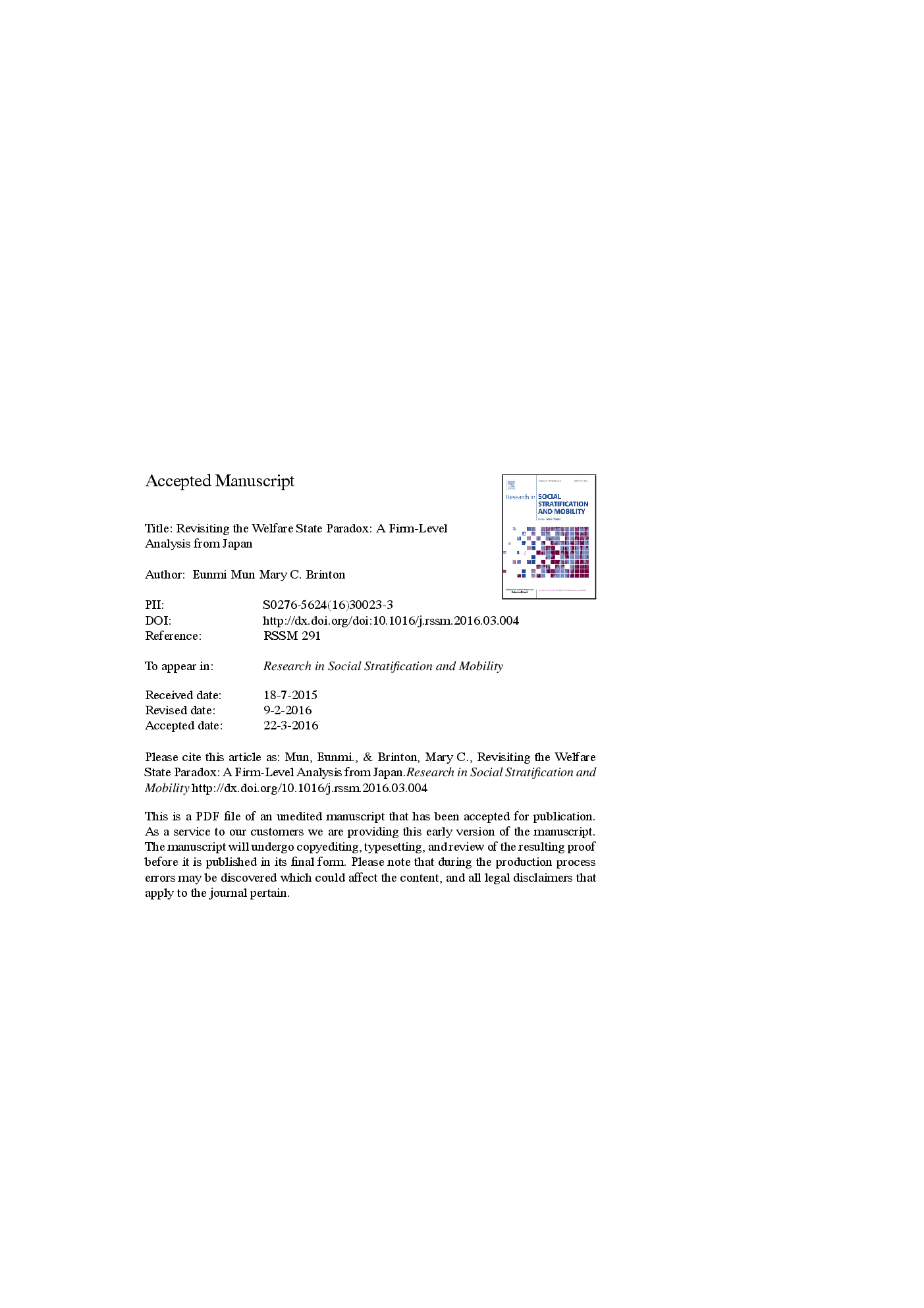ترجمه فارسی عنوان مقاله
بازنگری پارادوکس دولت رفاه: تجزیه و تحلیل سطح شرکت در ژاپن
عنوان انگلیسی
Revisiting the welfare state paradox: A firm-level analysis from Japan
| کد مقاله | سال انتشار | تعداد صفحات مقاله انگلیسی |
|---|---|---|
| 102226 | 2017 | 41 صفحه PDF |
منبع

Publisher : Elsevier - Science Direct (الزویر - ساینس دایرکت)
Journal : Research in Social Stratification and Mobility, Volume 47, February 2017, Pages 33-43
ترجمه کلمات کلیدی
سیاست های کار خانواده، مؤسسات بازار کار، ژاپن، سازمانها و نابرابری،
کلمات کلیدی انگلیسی
Work-family policies; Labor market institutions; Japan; Organizations and inequality;

